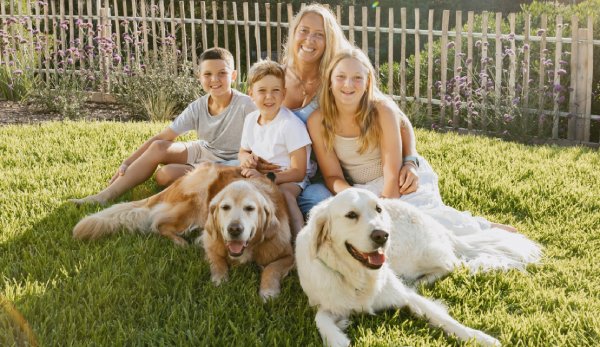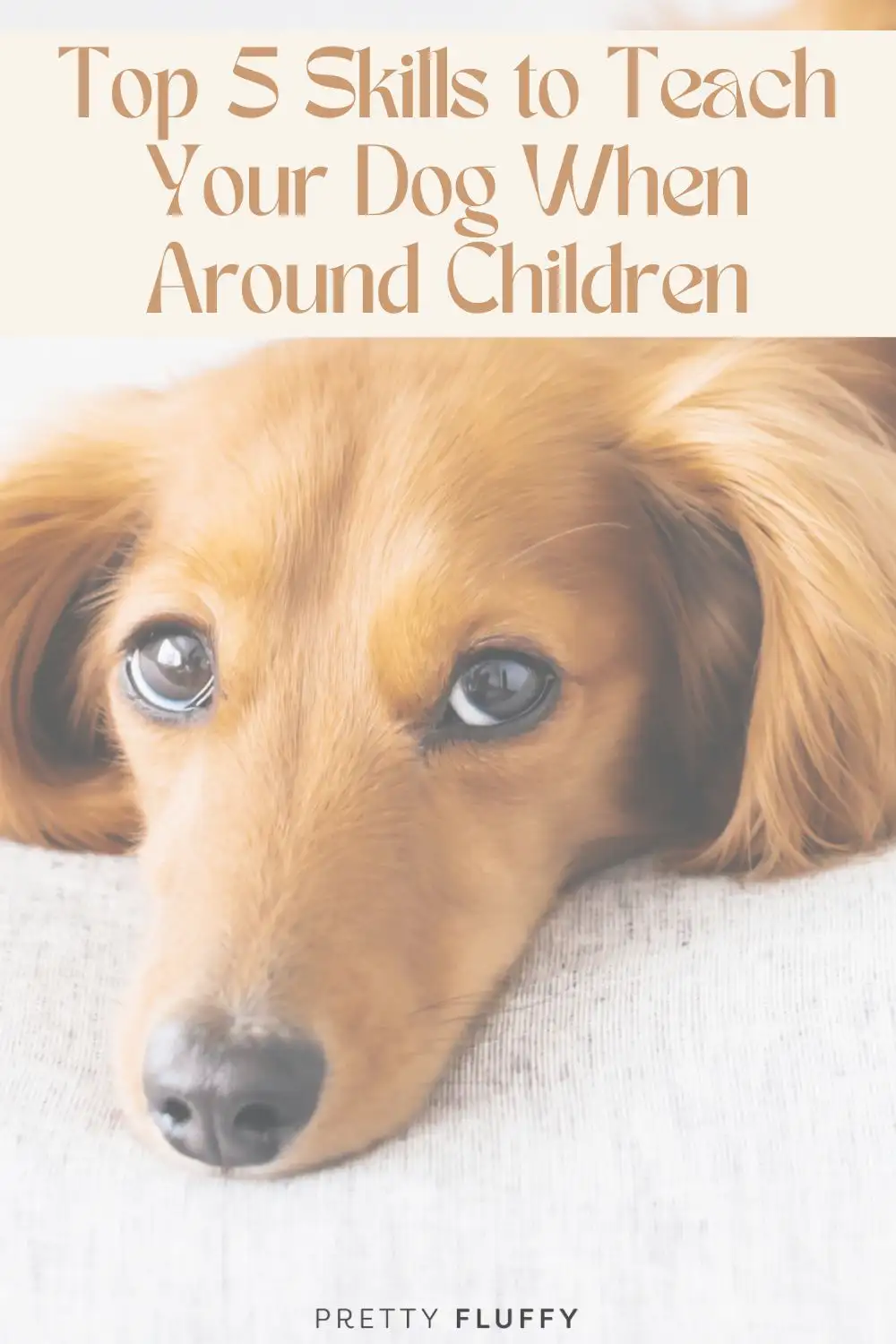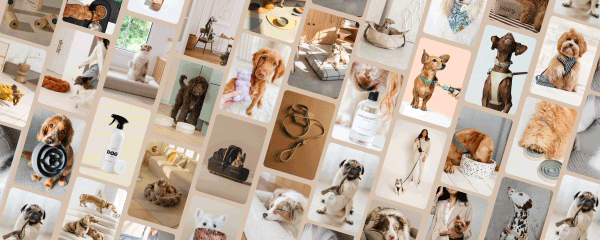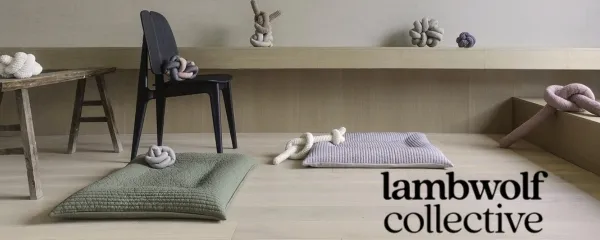Dogs & Kids: Top 5 Skills to Teach Your Dog When Around Children

Learn the top 5 important skills to teach your dog when around babies and young children to create a safe, happy and positive environment everyone can enjoy.
Copy: Mel of Cooper and Kids
Photography: Katy & Shell
Did you know April 26th is National Kids and Pets Day?
A day that celebrates the beautiful bond between children and their dogs, this day also raises awareness on child and pet safety, and promotes positive relationships between kids and pets.
You don’t need to be a parent to recognise the importance of ensuring your dog is calm and comfortable around kids. After all, your dog can encounter kids anywhere – the park, the shops, a family get-together, or even in your own home.
And when that happens, having a few core skills mastered will see both you and your dog handle the situation with confidence and ease.
That’s why we’ve enlisted the advice of expert dog trainer, Mel Ritterman of Cooper and Kids. Mum-of-three Mel is passionate about positive reinforcement training and creating safe and happy relationships between babies, children and dogs.
Here, Mel tells us her top 5 skills to teach your dog when around babies and young children, complete with step-by-step instructions.
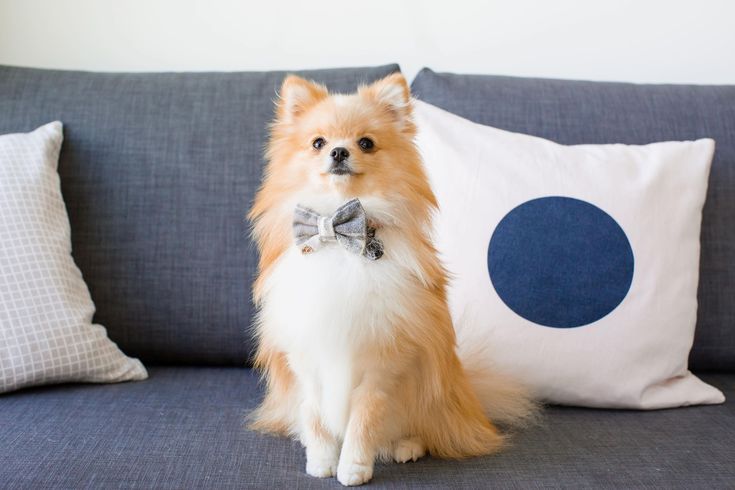
Top 5 Skills to Teach Your Dog When Around Children
Like with any dog training, it’s important to be patient and persistent. Start in a quiet place with minimal distractions, and work your way up to busier environments. Remember to always reward good behaviours, and ignore or redirect unwanted ones. If you find your dog isn’t getting it, go back a step, go slower and reward more generously. The more you practice, the better results you will get.
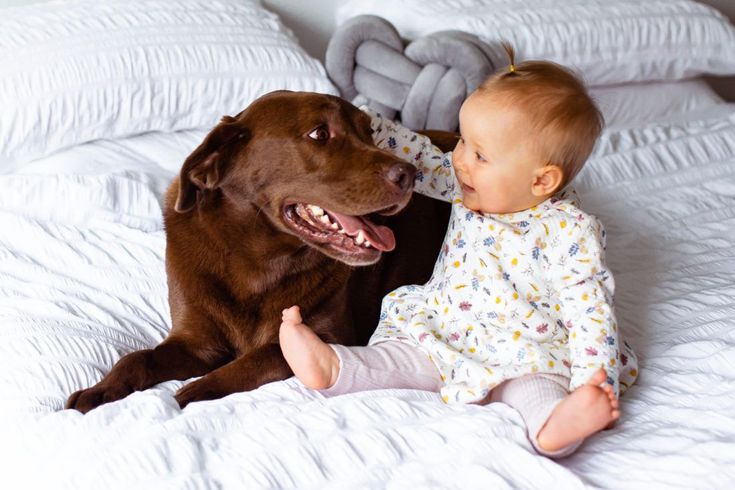
Skill One: “Sit”
Teaching your dog to sit around children is incredibly important for so many reasons. It’s good manners, just like a “please”. For example, I have taught Cooper that when he comes to me, he must sit before he gets his treat. He is a big dog, and I would hate for him to knock a child over. Now, when my kids call Cooper to them, he knows to sit before they will give him a pat.
How to teach it:
Step 1: Show it
Lure your dog into a ‘sit’ by holding the treat to their nose, and moving it slowly over their head toward their tail. Keep the treat lure close to your dog’s nose. If you move your hand too quickly or too far from their mouth, they may lose interest.
Step 2: Pay it
As soon as your dog’s bottom hits the ground, praise and treat. Repeat this as many times as you can, making sure you praise and treat every sit.
Step 3: Repeat it
Repeat the exercise several times. As soon as your dog sits reliably, you can now move to fading the food lure.
Step 4: Fade it
Remove the treat from your hand, and repeat steps 1-3. Do this until your dog sits reliably using only a hand signal, without you holding the food in your hand. When he does, you’re ready to add a verbal cue.
Step 5: Say it
Tell your dog, “Sit” in a cheerful tone of voice.
Step 6: Show it again
Pause a second, then lure your dog into a sit using the hand signal.
Step 7: Pay it again
As soon as your dog’s bottom hits the ground, praise and treat. When you and your dog are having repeated successful trials, move on to fade the hand signal.
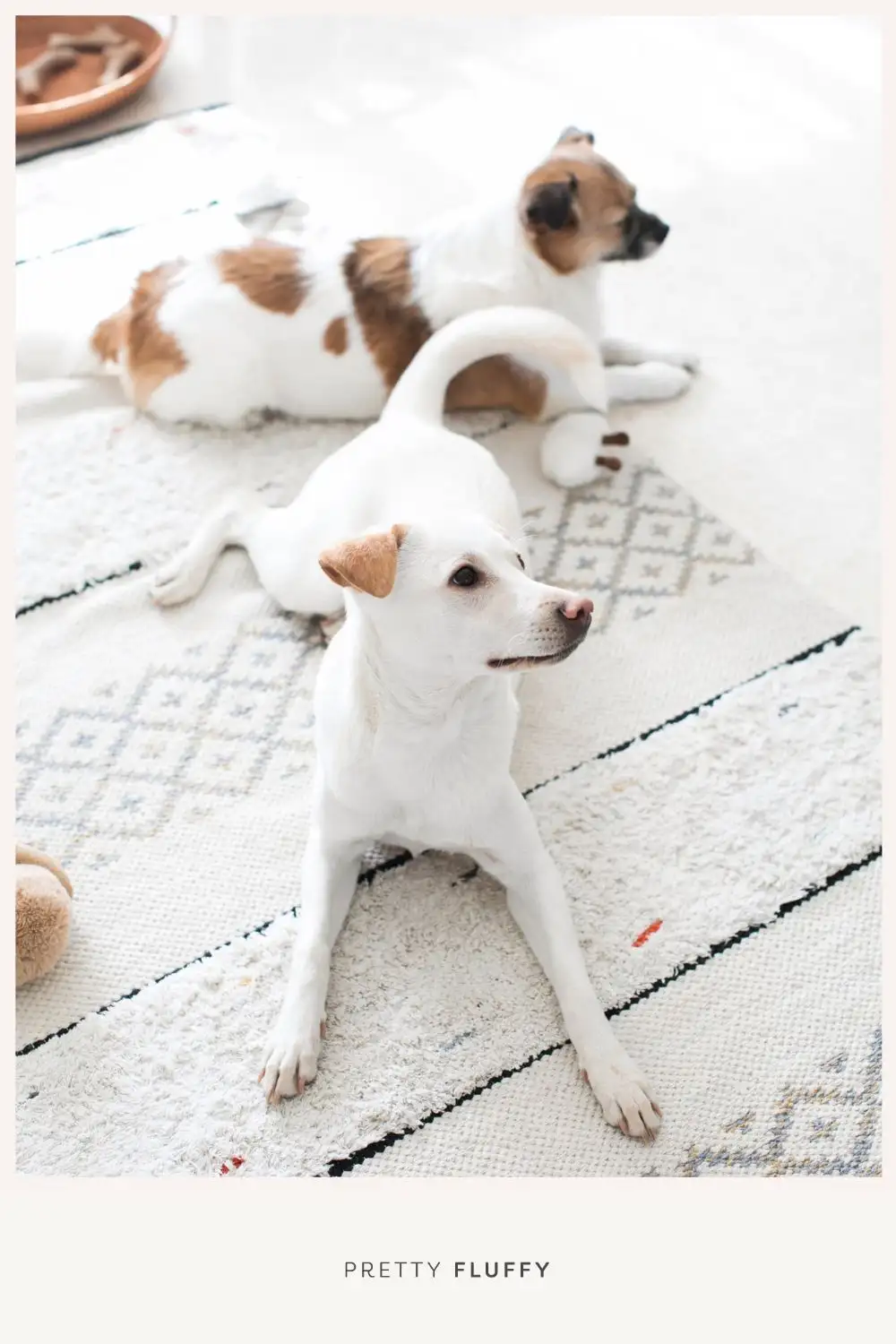
Skill Two: “Down”
Teaching your dog to lie down is an effective way to settle them in any environment. If you have a baby, a great time to do this is during ‘tummy time’ in those early few months of life. Teaching your dog to do a “down” (with you in between your dog and and baby of course) is a nice way to include your dog in family bonding time. This was also my way of including Cooper whilst breastfeeding – I would ask for a “down” and he could stay in the room with me.
How to teach it:
Step 1: Show it
Lure your dog into a ‘down’ by putting the treat up to their nose, and slowly moving the treat down to the ground. Keep the treat close to your dog’s nose. If you move your hand too quickly and too far from their mouth, they may give up and lose interest.
Step 2: Pay it
As soon as your dog’s knees and elbows hit the ground, praise and treat. Keep on treating to thank them for staying in the down. After a few seconds, say, “Okay!” and encourage your dog to get up. If they get up before you release them, lure them back into a down. Release your dog more quickly this time. Keep practicing to work up to longer downs.
Step 3: Repeat it
Repeat steps 1-3. When your dog gets into the down quickly, it’s now time to fade the food lure.
Step 4: Fade it
Remove the treat from your hand, and repeat steps 1-3. Do this until your dog does a down reliably using only a hand signal, without you holding the food in your hand. When he does, you’re ready to add a verbal cue.
Step 5: Say it
Hold a treat in your hand. Tell your dog, “Down” in a cheerful tone of voice.
Step 6: Show it again
Pause a second, then lure your dog into a down using the hand signal.
Step 7: Pay it again
As soon as your dog’s knees and elbows hit the ground, praise and treat. When you and your dog are having repeated successful trials, move on to fade the hand signal.
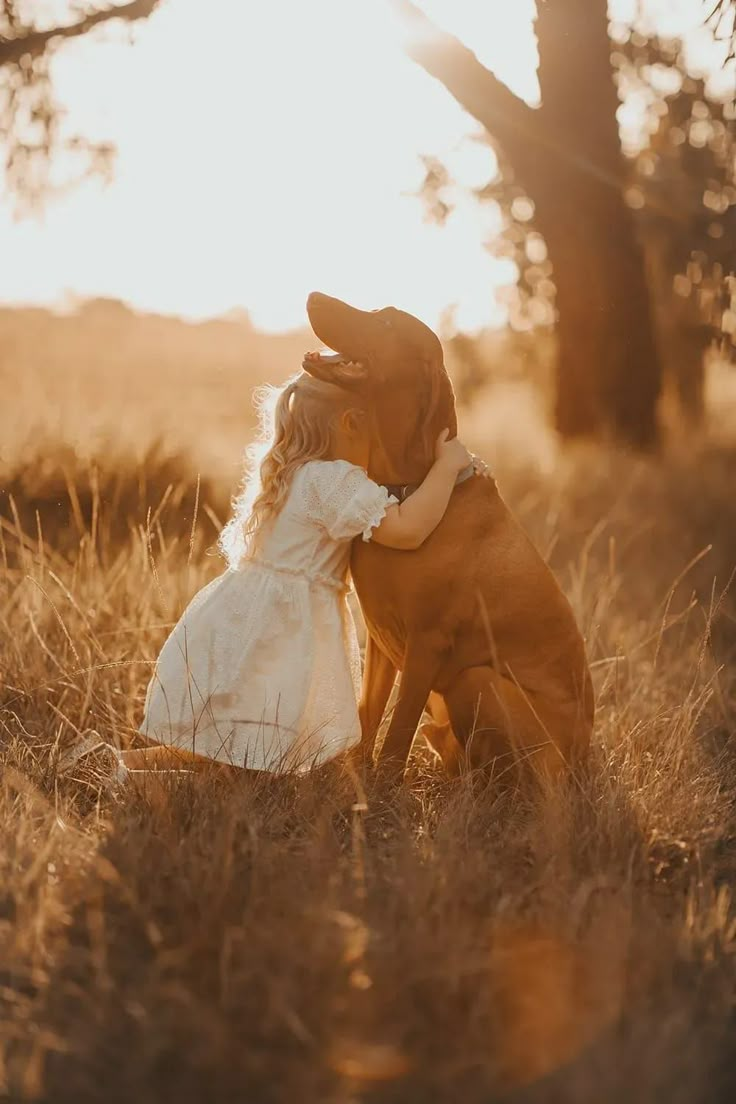
Skill Three: “On your bed”
Teaching your dog to go to their bed is a great skill for when you have people or children over. If it’s safe for your dog to roam freely, but perhaps they are unsure of what to do with themselves, asking your dog to go “on your bed” should help them to relax and settle. However, it’s important to teach children that when a dog is lying on their bed, they are to be left alone, as you never know how a sleeping dog will respond when startled or woken.
How to teach it:
Step 1. With a treat in your hand, tell your dog, “Go to your bed” in a cheerful tone of voice while pointing to their bed (you can also use a mat or a towel – it doesn’t need to be their actual bed).
Step 2. Pause a moment, then lure your dog onto their mat by putting the treat up to their nose, and slowly moving it over the mat. If you move your hand too quickly or too far away from their mouth, they may give up and lose interest.
Step 3. As soon as your dog has four paws on the mat, say “yes” and give a treat.
Step 4. Tell your dog, “Down.” Give the hand signal, or lure it if they need help. When your dog lies down, give them a treat. Continue to treat to keep your dog on the mat. After a few seconds, say, “Okay,” and allow your dog to get up.
Repeat steps 1-4, gradually increasing the amount of time you ask your dog to stay on the mat.
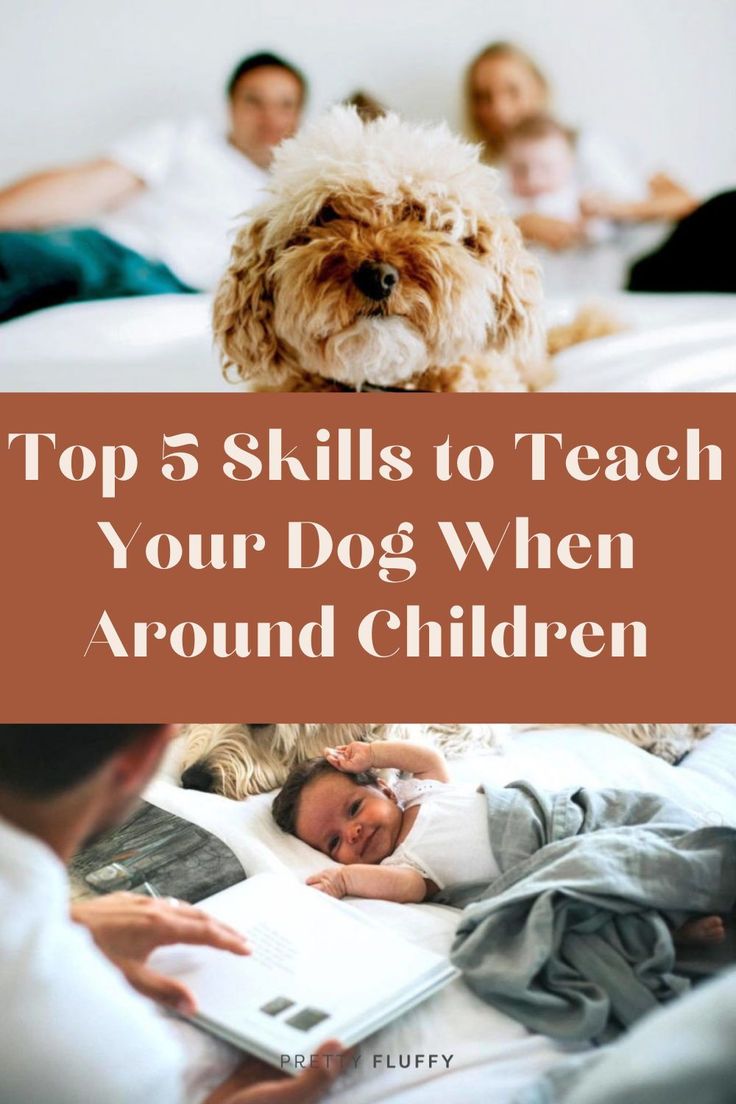
Skill Four: Recall / “Come”
Teaching your dog to come when you call them is a skill that can prevent scary or unpleasant situations. If your dog or child tries to approach one another in an over-excitable or confronting manner, it’s important to redirect your dog in a positive way and praise them for it, as opposed to scolding them. This helps to maintain a happy and positive association between kids and dogs.
How to teach it:
Begin teaching this at home with minimal distractions around. Once you get it right at home, move up to a highly distractible place, like the dog park. When working outside, practice in enclosed spaces or on a long leash, until your dog’s recall is reliable.
Step 1. Have a friend or your partner to assist. Stand about two metres apart to start, both with high value treats in your hands. One person is to hold one treat out in their hand for your dog to see. Then, call your dog in a nice, loud cheerful tone.
Say your dog’s name, then “Come.” For example, “Cooper, come!” Your dog’s name by itself is not a recall. As soon as they come, reward with the treat.
Step 2. Once your dog’s had the first treat, the next person is to call the dog in the same cheerful manner, while holding one treat out in their hand. As soon as your dog comes, praise and reward.
If your dog doesn’t come, don’t repeat the cue. Walk up to them, stick the treat under their nose and lure them back to you. Give your dog the treat when you get back to your starting point.
If he didn’t follow that treat, you either need higher value treats, or a shorter distance between the two of you. Repeat this over and over – just like a game of ping pong.
Step 3. When your dog begins to understand the game, step back to increase the distance between you. The aim is that your dog’s recall will become so good, that you will be able to hide around your home, call your dog and he will come to find you. The same should then happen when outside the house, at a busy dog park for example.

Skill Five: “Give” / “Thank you”
If your dog puts something in their mouth they shouldn’t, you need a word they understand that will open their mouth to release it. My motto is – never take, always trade! If your dog steals something they shouldn’t, don’t chase them and take it from them. They will think it’s a fantastic game and run away from you. We want them to learn that if you take something from them, they will always get something better.
How to teach it:
Step 1. Offer your dog a toy they are likely to pick up in their mouth. You may have to entice them by shaking it in front of them playfully.
Step 2. Once your dog is holding the toy in their mouth, present a food treat in front of their nose. As soon as they drop the toy, give them the treat.
Step 3. Repeat steps 1 & 2 a few times. If your dog is too focused on the treat to pick up the toy, take a short break, then try enticing them to play again.
Step 4: Add a verbal cue. Once they have the toy in their mouth, say “Give” or “Thank you” just before you present the treat in front of their nose. As soon as they drop the toy, give the treat. It’s up to you which word you use, just make sure everyone in your family is using the same one.
Step 5: Continue practicing, slowly increasing the time between your verbal cue and offering the treat in front of their nose. You’ll know your dog understands the cue when he starts to drop the toy before you show him the treat.
Step 6: Mix it up! Once your dog has the hang of dropping on cue, try rewarding drops with a game of fetch instead of a treat. When they drop the toy, toss it and encourage them to get it.
Please remember that active supervision is essential around children and dogs, as is learning to understand your dog’s body language so you can help them when they are not happy in a situation. If you cannot be actively supervising, please ensure your child and dog are separated safely.
Visit the Cooper and Kids website for more information about understanding dog body language and communicaton and how to ensure your dog enjoys their encounters with children rather than just tolerating them.
Disclaimer: Cooper and Kids will not be liable for anything that happens to you, your dog or children by following the advice and tips in this article. If you have concerns about your dog and/or safety of your children, please seek out a local professional to come to your home and assess the situation as soon as possible.
About Cooper and Kids
Cooper and Kids specialises in creating safe, happy and positive relationships between babies, kids and dogs.
Mel is an IAABC accredited dog trainer and a busy mum to three young children, as well as her golden retriever, Cooper.
Mel is passionate about helping expecting families prepare their dogs for life with a baby, and helps families wanting to introduce a new puppy or dog into the home. She uses force-free, positive, science-based training methods and loves helping to educate families about this.
Find Cooper and Kids:
WEBSITE | INSTAGRAM | FACEBOOK
